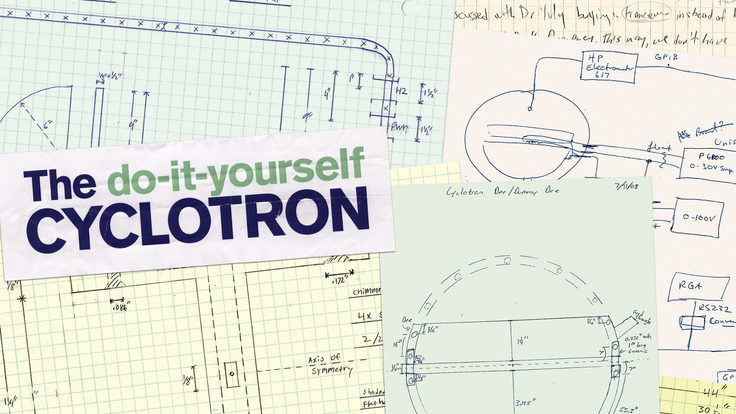
Members of the Endeavour crew pose with AMS Director Samuel Ting (third from left) and CERN Director-General Rolf Heuer (right) at CERN. Image: Anna Pantelia
Five U.S. astronauts spoke at CERN Wednesday to celebrate a year of data-collection by the largest experiment in space.
The astronauts helped install the Alpha Magnetic Spectrometer at the International Space Station in May 2011. Scientists analyze data from the detector, called AMS-02, from a control room at CERN.
“What you do here at CERN, what you do back at your own universities and institutions, what we do aboard the International Space Station, it’s for humanity,” said Col. Michael Fincke. Fincke holds the record for the most time spent in space by an American.
The ISS, like CERN, brings together people from around the globe, said Col. Greg Johnson. The colonel, who completed his training as a pilot in the U.S. Air Force during the Cold War, worked with a team of Russian cosmonauts to install the detector on the ISS.
“In space, somebody that I trained to fight against is now my friend, and we’re working together,” Johnson said. “That was very rewarding for me.”
AMS-02 has collected information about 17 billion cosmic-ray events since it began running. Cosmic rays shower the lower atmosphere of Earth every second – a result of protons and the nuclei of heavier atoms colliding with other molecules and decaying into electrons, positrons and muons. The AMS-02 studies the cosmic rays in their natural habitat before they are bombarded by the molecules in Earth’s atmosphere. This, combined with the AMS-02 search for antimatter and the origin of dark matter, could lead scientists to a better understanding of how the universe came to exist as it does now.
“In 1994, when I began to think about this experiment, it was difficult for me to dream [of] today,” said AMS Director and Nobel Laureate Samuel Ting at the lecture. “It is a great pleasure for me to come here.”
The AMS-02 installation was a part of the last mission by the NASA Space Shuttle Endeavour. Capt. Mark Kelly, Johnson, Fincke, Col. Roberto Vittori, Dr. Andrew Feustel and Dr. Greg Chamitoff were on board. AMS-02 will continue taking data for the lifetime of the ISS – through the 2020s, if not longer.
The astronauts and their families spent the rest of Wednesday visiting sites at CERN such as the AMS control center. Thanks to a technical stop to repair a cryostat, they were able to make a rare descent into the Large Hadron Collider tunnel and CMS experiment detector cavern.
Although it can’t be easy to impress someone who has been to space, the astronauts seemed delighted with the visit. As Fincke said, “CERN is where astronauts want to go when they grow up.”
For more information regarding AMS-02, visit the experiment’s website: http://www.ams02.org/






